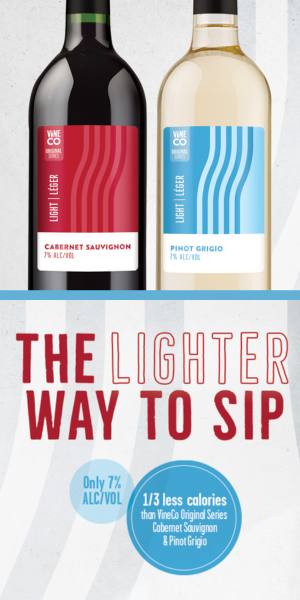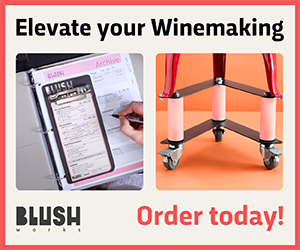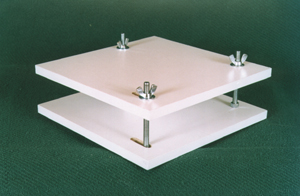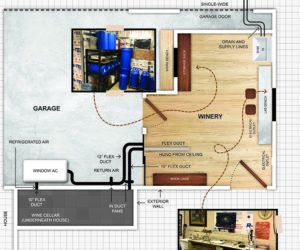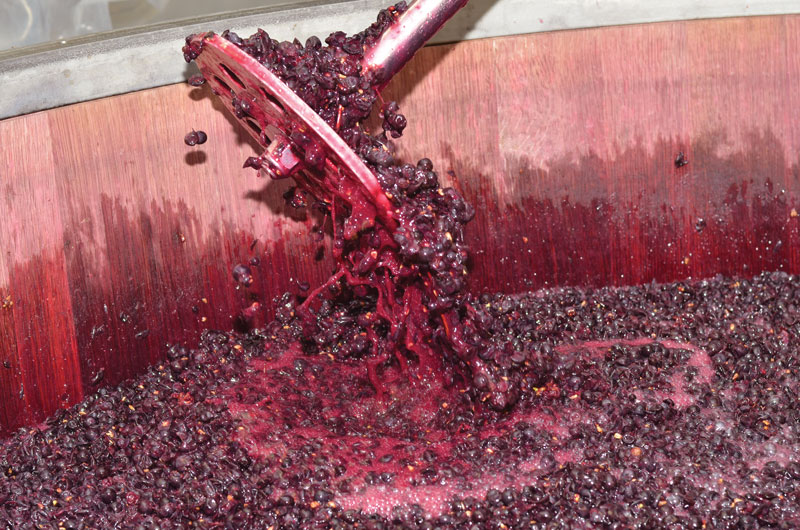During the global pandemic of 2020, while people across the world were resting their sourdough starters, buying yoga mats, watering gardens, and building Lego towers, I, a professional sculptor of over two decades, turned to amateur winemaking. I quickly gained a deep interest in the process that has only grown to this day. As an artist, the exercising of my creativity is something that is naturally required of me on the daily. An eye for unusual solutions, like using dentist’s implements to carve fine details into clay, is what gives an artist their edge. Thus was my attitude when beginning the journey and learning about fermentation curves, aging, bottling, and storing wine in the three-car garage that has for many years functioned as my art studio.

An amateur in every sense of the word, a few problems immediately leapt into my winemaking path. One of the earliest challenges being temperature control within the two deep freezers that I use to ferment and age the wine, respectively. The garage is far more susceptible to temperature fluctuation from outside weather than the rest of my house, particularly when it comes to colder nights — at least, as cold as it gets in the sunny suburbs of the California Bay Area. But while a night that regularly drops to 40 °F (4 °C) may mean next to nothing to most of the population of North America, to an aging carboy of wine along the wall of a largely uninsulated garage it poses a grave and imminent danger. I soon developed an affordable solution to combat this, and one that has worked perfectly throughout the four years and 30+ batches of wine as I’ve expanded my hobby.
When fermenting red wine, I have found the optimal temperature progression starts at 70 °F (21 °C) to get it on its way, followed by a rise to 80 °F (27 °C), and finish off with a temperature cooled to 65 °F (18 °C), after which point I transfer the wine to my larger deep freezer for bulk aging where it is kept at an exact 55 °F (13 °C). For my white wines I usually maintain a 65 °F (18 °C) cellar temperature. However, all of these are just starting points since certain yeasts will do better with a little more heat, which helps to achieve more elements within the taste I’m looking for. The whites in particular are then usually cold and slow the rest of the time. All of this to say — a reliable and efficient way of controlling the temperature within the deep freezers was paramount to the quality of my wine (which have since had great success in competition).

I use a set of three deep freezers that I have converted into temperature-controlled cellars for the fermenting and aging processes — two large freezers and one smaller freezer. The smaller freezer is dedicated to fermenting the wine in 7-gallon (26.5-L) fermenters. I then transfer the wine into 5- or 6-gallon (19- or 23-L) carboys for bulk aging, sometimes on oak, in the larger freezers. The temperature control system works for all of the freezers, and consists of not only the Inkbird ITC-308 temperature controller, but a reptile terrarium heating pad as well. This is a method similar to the one I use to keep the bricks of clay that I sculpt with soft. Since my clay arrives in hard bricks and never dries out, I worked out a way to keep it at the temperature required for the right pliability at which it can be easily molded.
While many people use an Inkbird for some degree of temperature control for their wine cellars, I have not heard of anyone else connecting a reptile terrarium heating pad to the deep freezer as well. Since a lot of the time the temperature in my garage drops below the temperature desired for my winemaking, the heat pad is crucial to keep the temperature up, and it is extremely efficient in tightly maintaining a specific temperature.
The Inkbird is connected to the heating pad as well as the freezer. The Inkbird controller has two receiving plugs. One will receive the plug for the freezer, and the other the plug from the heating pad. I secure the heating pad to the back wall inside of the freezer via aluminum foil tape. The temperature probe I secure along the inside top of the lid with duct tape so that it hangs freely so it reads the ambient temperature rather than an object’s surface temperature. If I want to maintain the bulk aging cellar at 55 °F (13 °C), and my garage studio causes the cellar to get too warm, the freezer’s cooling system activates to keep the internal temperature at 55 °F (13 °C). Conversely, if the temperature drops below 55 °F (13 °C), the heating pad connected to the Inkbird warms it back up.
This cycle continues, but typically the temperature stays very close around where I intend it because it is housed in an in insulated freezer.

I set the temperature a little differently on the controller for the fermentation freezer than the controllers for the aging cellars. The setting for when the fermenter turns on or off is set to 1–2 °F (1 °C) from the set temperature, since at this stage it is best to keep it as close to the desired temperature with as little fluctuation as possible. The aging cellars, on the other hand, I have set to 55 °F (13 °C) with the controller override kicking on if the temperature fluctuates 6 °F (3 °C) on either side. This generally keeps the cellar at 55–57 °F (13–14 °F) year-round. I’ve also set the fermenter up to alert me if the temperature ever fluctuates to 10 °F (5 °C) warmer or cooler than the programmed temperature, just in case there is ever a problem with the equipment (I have not had one yet, but the piece of mind makes it easier to keep from opening the freezers to make sure everything is working properly).
This temperature control system functions akin to an incubator, but designed for wine, and I have been using it for four years without any issues.
I have hesitated in sharing this setup, as I wasn’t sure if it would be helpful to other, more experienced home winemakers. But the longer I use it, the more appealing it becomes as an extremely efficient method that I have found not many home winemakers I know were previously aware of. Minus the cost of the chest freezer, the system only costs around $60 or $70 with the reptile terrarium heating pad, Inkbird, and aluminum tape. I acquired a working chest freezer to use as the fermenter for free. The deep freezer I bought new for $400, though the likelihood of being able to find a used one near you online is pretty good, at least in doing a search around my location.
With all these costs is one last thing worth mentioning — this entire setup makes hardly a dent in my electricity bill. The sealed environment makes it so that it only activates a couple of times a day, generally for just a few minutes at a time.

Finishing off the project, the freezers are covered with faux wood planks to resemble wine barrels, complete with fake spilled wine for added effect.
What began as an interesting Covid hobby and conversation starter for me has turned into something much more. The process of creative problem solving and inventing new and unusual solutions as they relate to the journey of a handful of grapes to a dark, fine wine has been supremely rewarding, and I can only imagine how everyone who reads this might feel the same.
